Eagles are one of the largest and strongest birds in the sky. They are nicknamed “birds of prey” due to their gracefulness, balanced aggression, and fantastic eyesight. They are extraordinary hunters with extremely impressive wingspan. Also, they stand as a living symbol of freedom, power, and transcendence worldwide.
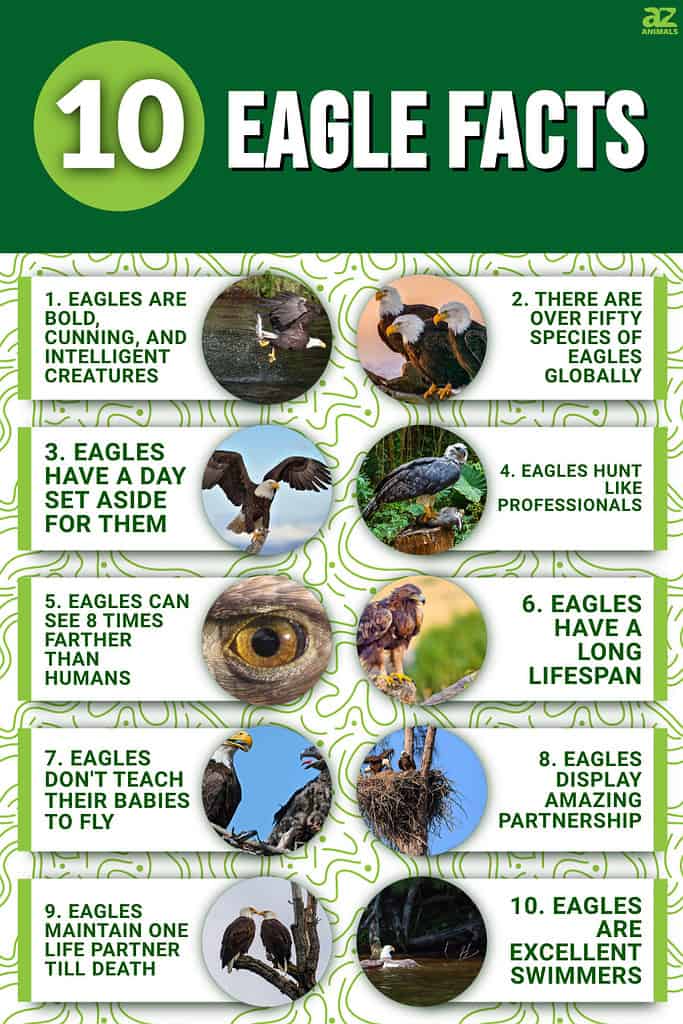
These apex predators are carnivorous, making it comfortable to eat other animals, including fish. Let’s look at ten incredible facts about eagles in this post.
1. Eagles are Bold, Cunning, and Intelligent Creatures
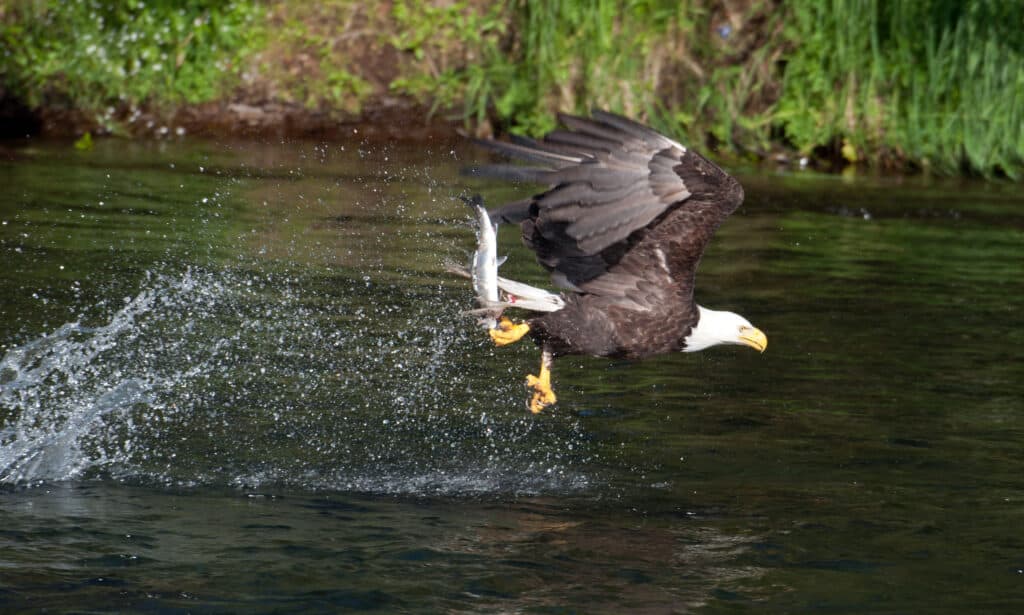
Eagles spend minutes studying their target and attack when the time is right.
©Tony Campbell/Shutterstock.com
You may hear eagles being vocal from afar and start wondering why the sound persists. That is their mode of communication, usually between parents and their offspring. Surprisingly, the receiver within close range of the bird making the sound can get the message.
Being magnificent hunters, eagles attack prey by behaving cunningly. In most cases, they spend minutes studying their target and attack when the time is right. They display unusual cunningness by diving toward the sun to deceive the prey before attacking.
2. There are Over Fifty Species of Eagles Globally
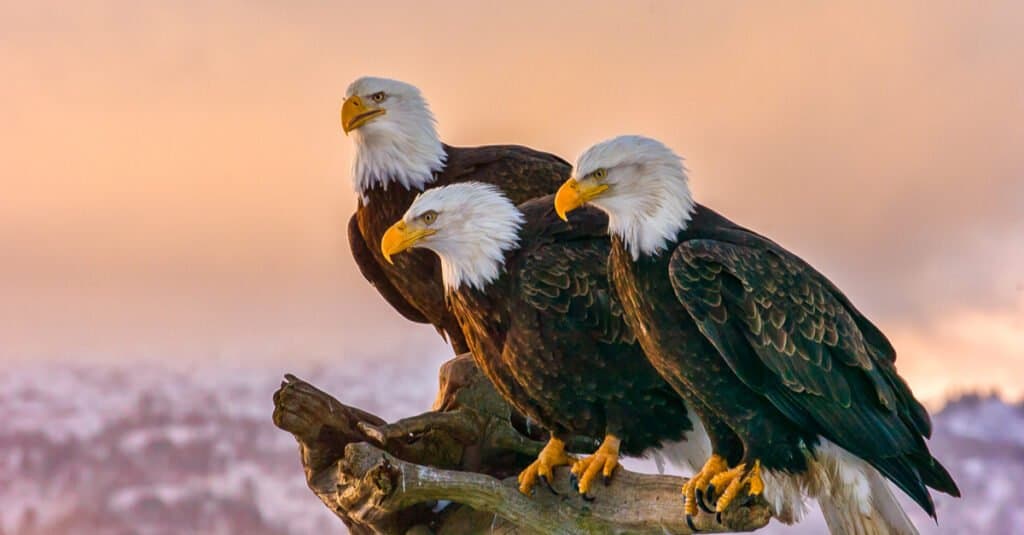
The bald eagle is one of the largest birds in North America.
©FloridaStock/Shutterstock.com
These birds belong to the Accipitridae family, consisting of different sizes with solid hooks. Their species are predominant in Africa and Asia. Research shows that over forty species can be found within the two regions. Other species live in other regions such as Australia, North, South, and Central America. The common one you will find in America is the bald eagle.
Another classification grouped these magnificent birds into four – sea, booted, giant forest, and snake eagles. The grouping is based on what they eat, as the booted ones are famous for feeding on birds and small mammals.
3. Eagles Have a Day Set Aside for Them
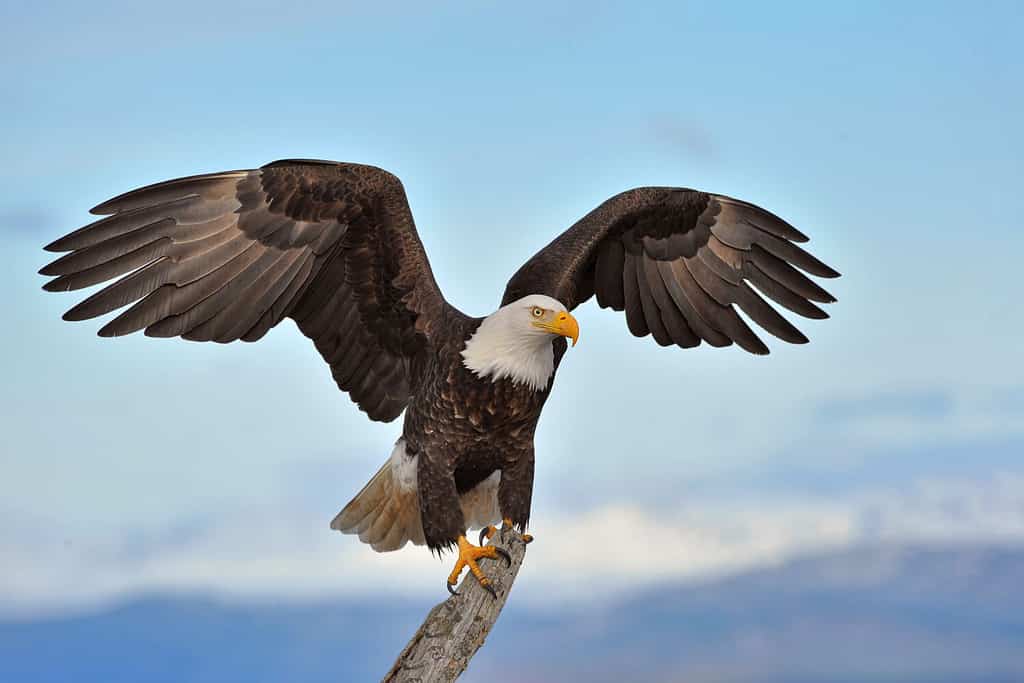
January 10th is a day to remind us of the importance of eagles.
©FloridaStock/Shutterstock.com
January 10th is the day specified to save these birds of prey. It is a subtle reminder that the world needs to conserve eagles by preventing them from going into extinction. For example, bald eagles were endangered at some point. Thanks to the selflessness of some scientists who fought to ensure these vulnerable species remain in existence.
4. Eagles Hunt like Professionals
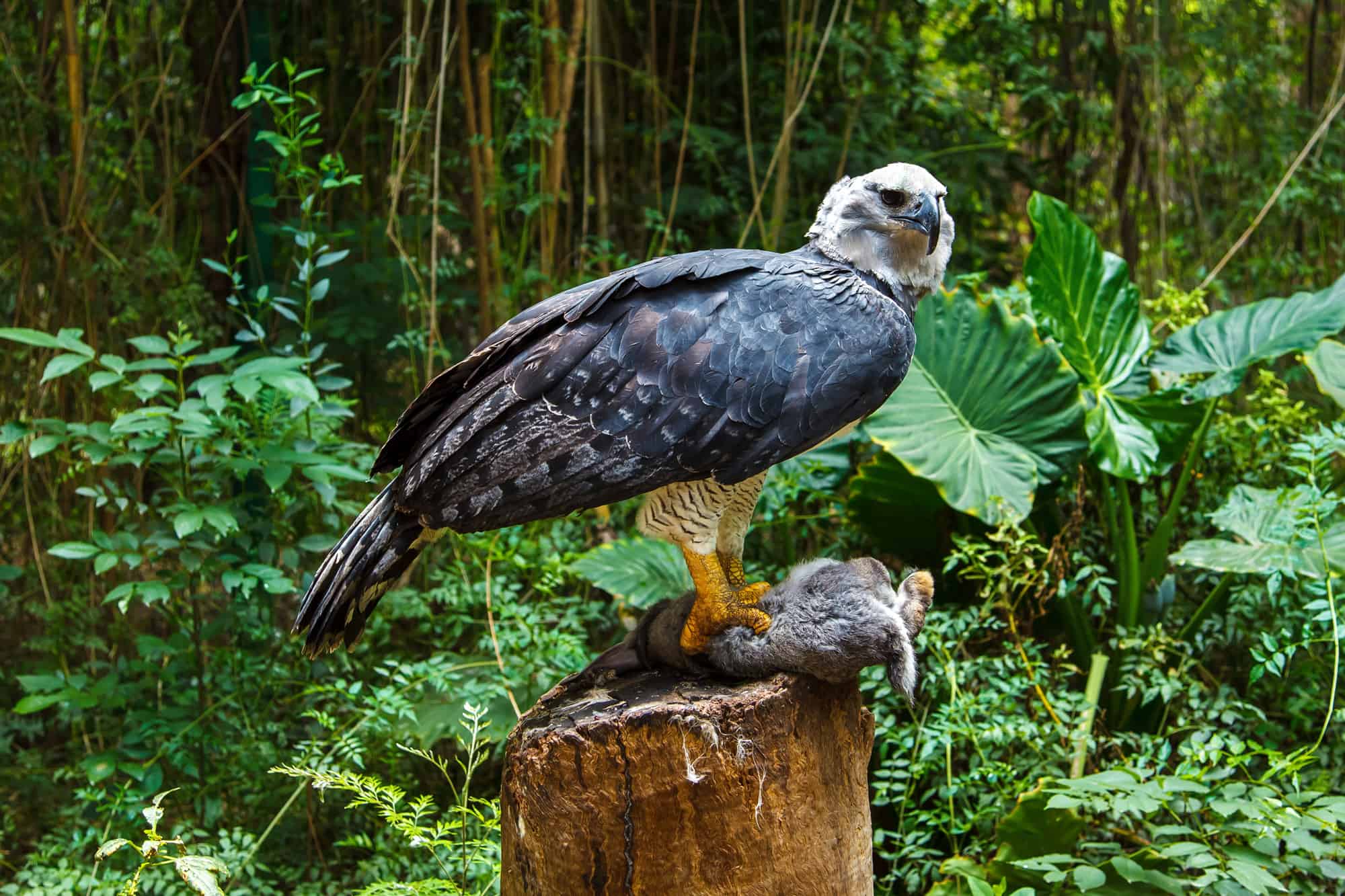
Eagles like the
Harpy Eagle
are very bold and successful hunters.
©ChepeNicoli/Shutterstock.com
These magnificent birds leverage every weapon within their arsenals when hunting prey. They have heavy and powerful beaks, which makes attacking their target seamless. As tiny as they look in the air, eagles don’t have predators, further bolstering their boldness.
They believe in their solid beak during attacks, considering that it helps them to pick and tear prey into pieces. Once they grab any animal with it, it can’t slip off. The animals they hunt include fish, rodents, reptiles, and other small mammals.
5. Eagles Can See 8 Times Farther Than Humans
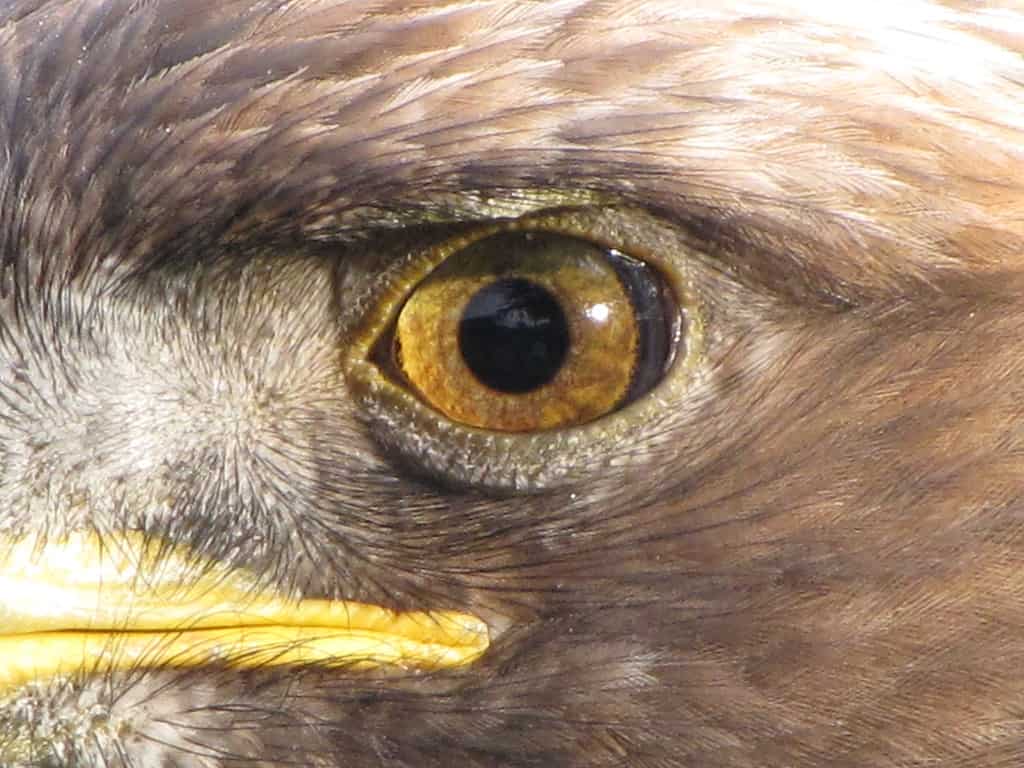
An eagle’s eyesight is so great it can spot prey over a mile away.
©Peter Kaminski / CC BY 2.0 – License
A fantastic discovery by bird experts is that there is no difference in the size of humans’ and eagles’ eyes. However, what differentiates the bird from humans is its impressive eyesight. The vision of the apex predator is eight times stronger than humans due to its retina.
Apart from the eagle’s astonishing eyesight, it can spot prey as far as three kilometers away (1.9 miles) and can see up to five colors, and detect ultraviolet light.
6. Eagles Have a Long Lifespan

Eagles can live 30 years in the wild.
©Al Carrera/Shutterstock.com
Eagles in confinement live longer than the ones that live in the wild. According to research, the confined ones can live up to 68 years, twice the life expectancy of the free birds. The wild eagles do not live beyond 30 years due to a lack of veterinary care.
About 50% of wild birds die before adulthood due to starvation or accidents. Another shocking fact is that these magnificent birds become weak when they become old. That increases the likelihood that they will die of hunger due to their inability to hunt.
7. Eagles Don’t Teach Their Babies to Fly
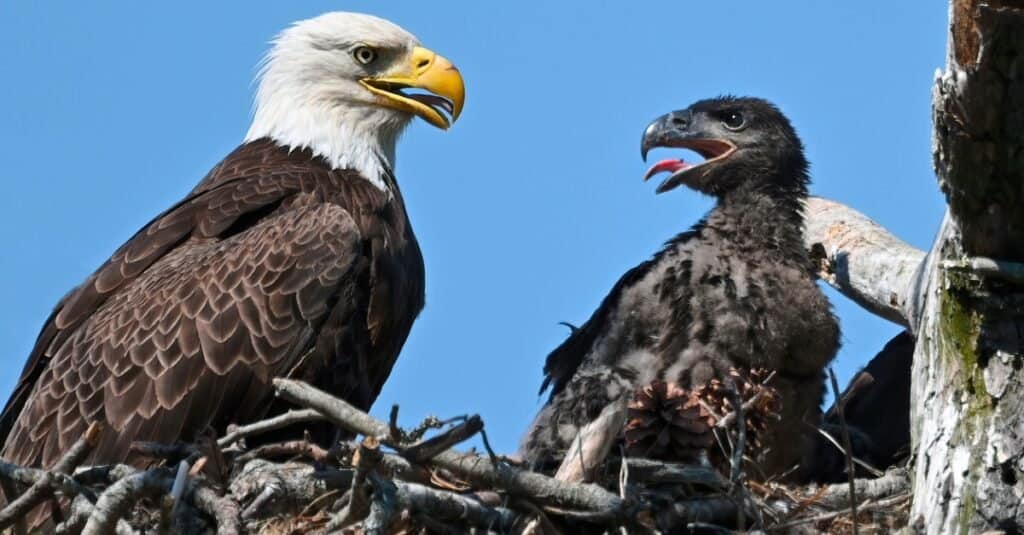
Eagle parents slowly stop feeding their young when they are old enough to fly using hunger as a motivation for them to start flying.
©iStock.com/BrianEKushner
Unlike some birds that take it upon themselves to teach their young ones, eagles don’t do that. They prefer that the eaglets learn the hard way. So, the parents delay feeding to make the babies feel intense hunger. The assumption is that once the eaglet becomes hungry, it will find the motivation to fly.
According to experts, it works in many cases. The babies wait for a longer time for the adults to return with food. However, if it’s not forthcoming, they try using their wings for the first time to source something to eat.
8. Eagles Display Amazing Partnership
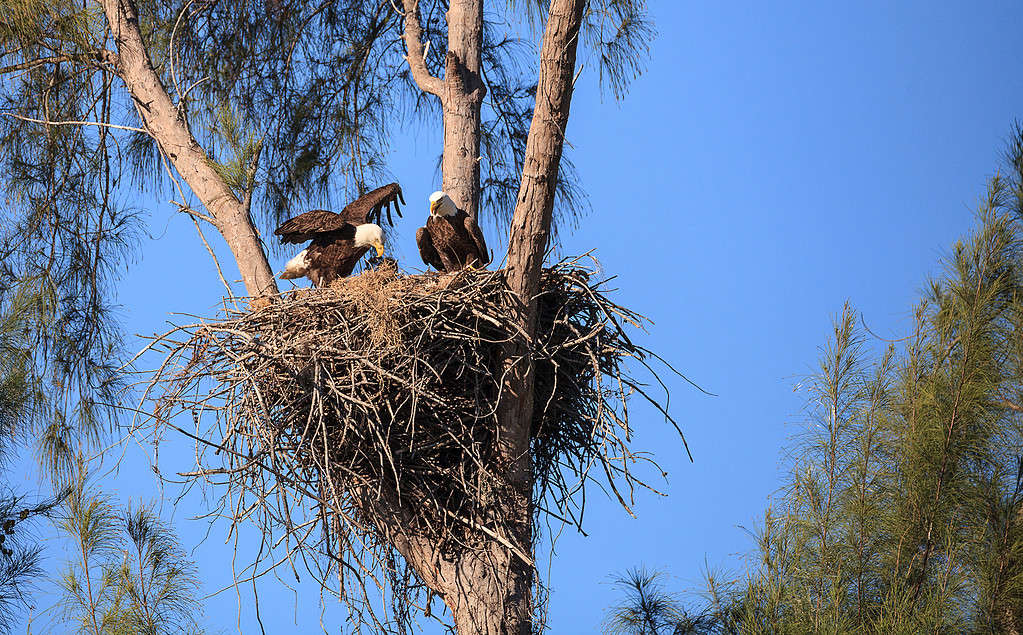
Eagle mates have an amazing partnership that provides security.
©iStock.com/LagunaticPhoto
Human relationships and partnerships are understandable because we are advanced beings. More surprising is the collaboration between a male and a female eagle. When they choose to live as husband and wife, they live their lives based on planning.
For example, the male’s duty is to ensure that the nest never runs out of food. On the other hand, the female remains in the nest to protect and warm the egg for 35 days. That is one of the best partnerships you will see among birds.
9. Eagles Maintain One Life Partner till Death
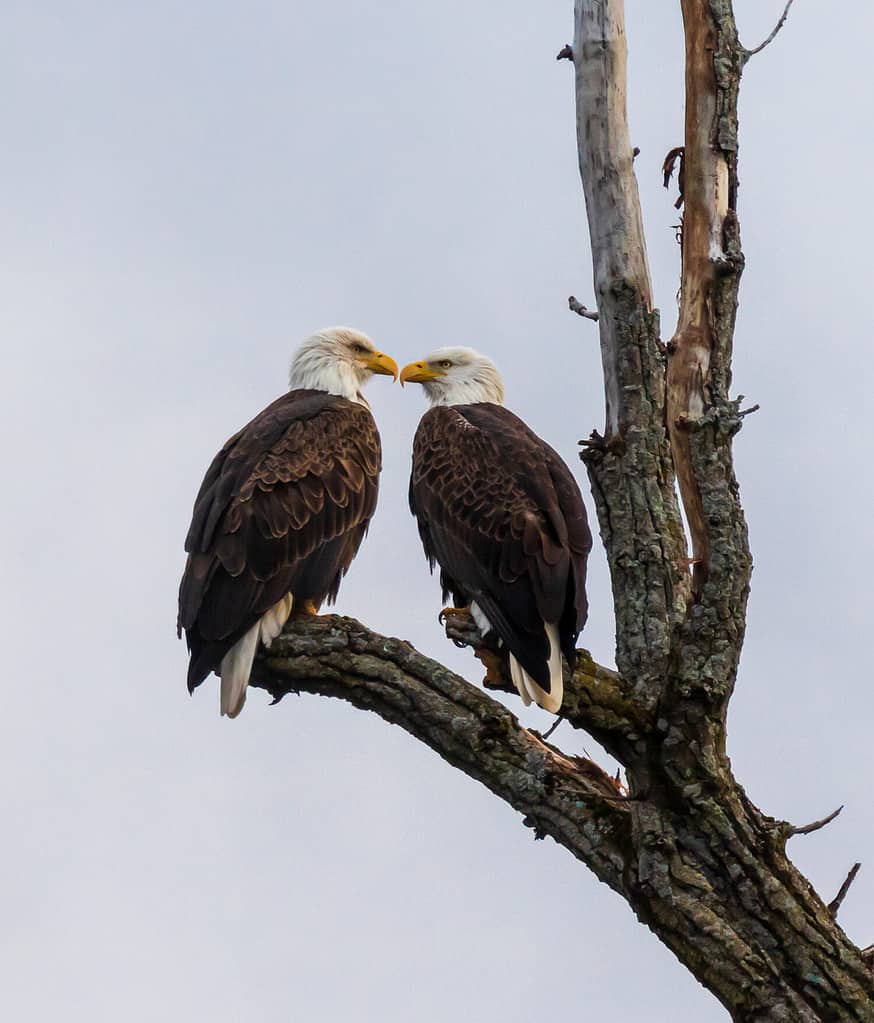
Eagles mate for life and let nothing come between them.
©Jennifer Yakey-Ault/Shutterstock.com
In addition to the previous fact, eagles stick to a mating partner for the entirety of their existence. If nothing happens to either of them, no one can come between them. They do virtually everything together with excellent parenting history.
However, some situations can make the male or female go with another partner. Death or disappearance are the factors that necessitate a change of partner. One must have been away for more than a year for that to happen.
10. Eagles Are Excellent Swimmers

When bald eagles catch a really big fish – they sometimes have to hold it in their claw and swim to shore to tear it into manageable pieces.
Image: Michael Tatman, Shutterstock
©Michael Tatman/Shutterstock.com
Most eagles are good swimmers, especially the bald eagle. They might look awkward while swimming, but their long wings enable them to swim efficiently. An astonishing fact about the bald eagle is that it uses its paw to hold prey while swimming.
Eagles usually use their wings to perform breaststroke while bringing their prey to the shore. Their favorite water preys are fish and waterfowl.
The photo featured at the top of this post is © iStock.com/emranashraf
Thank you for reading! Have some feedback for us? Contact the AZ Animals editorial team.







